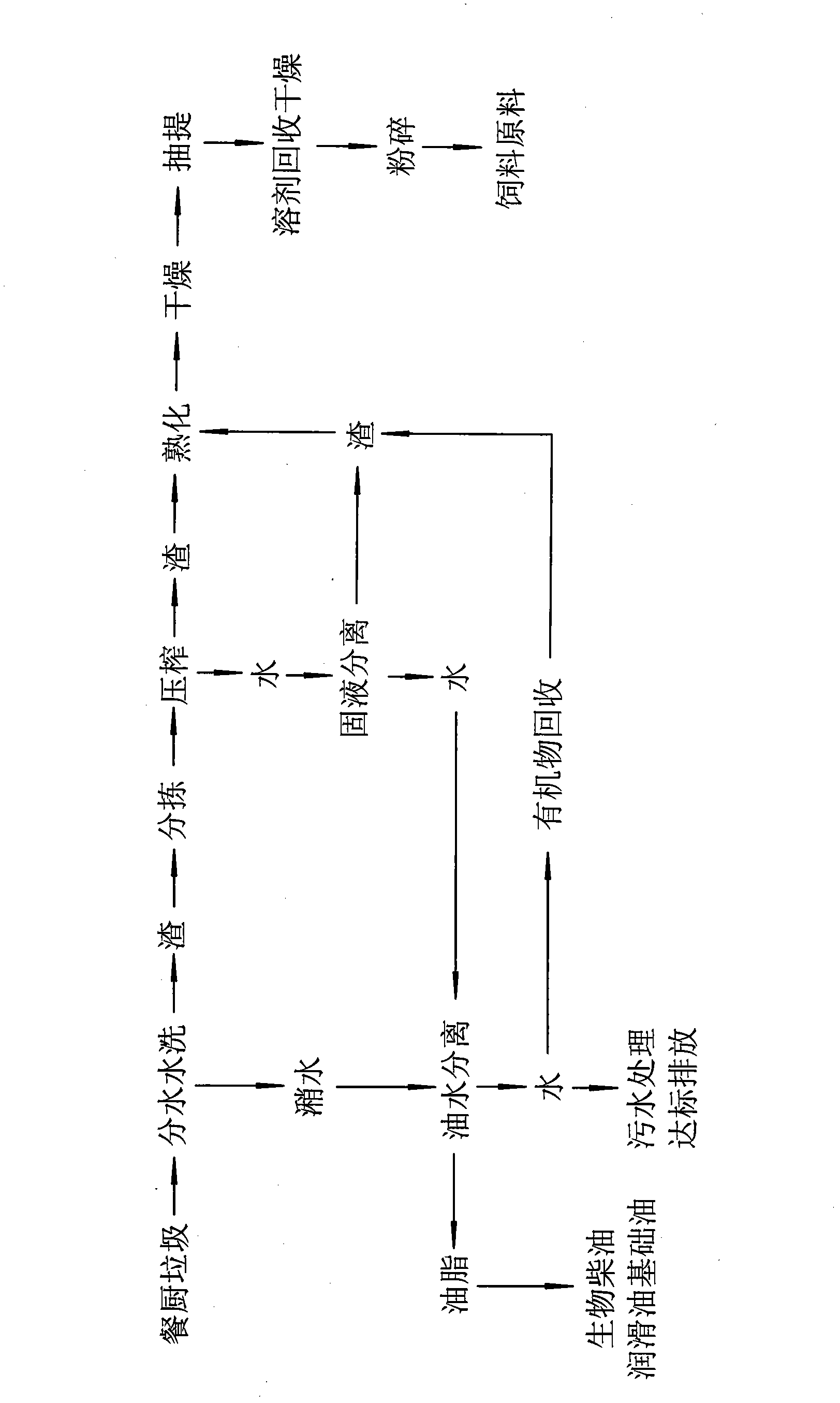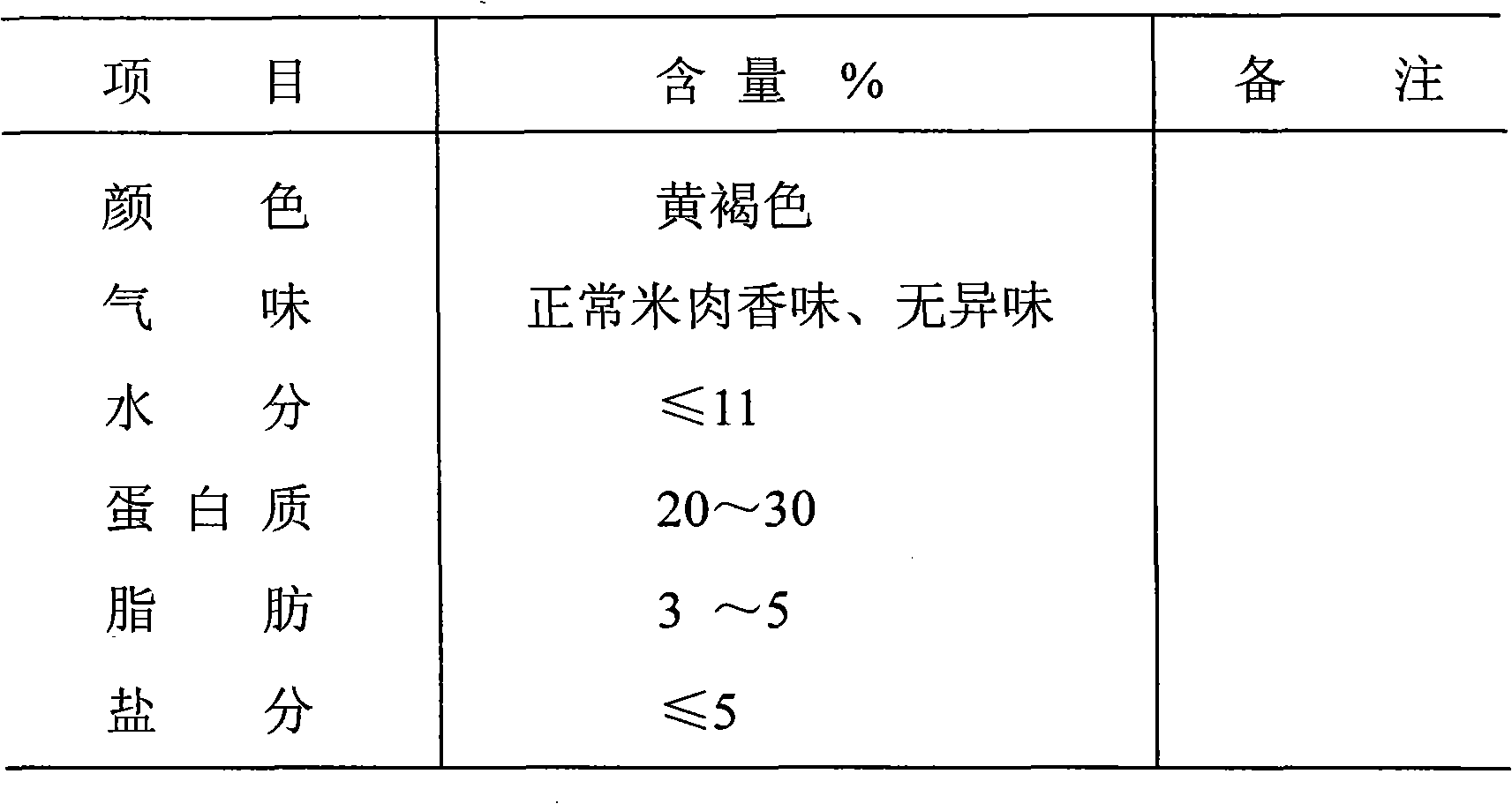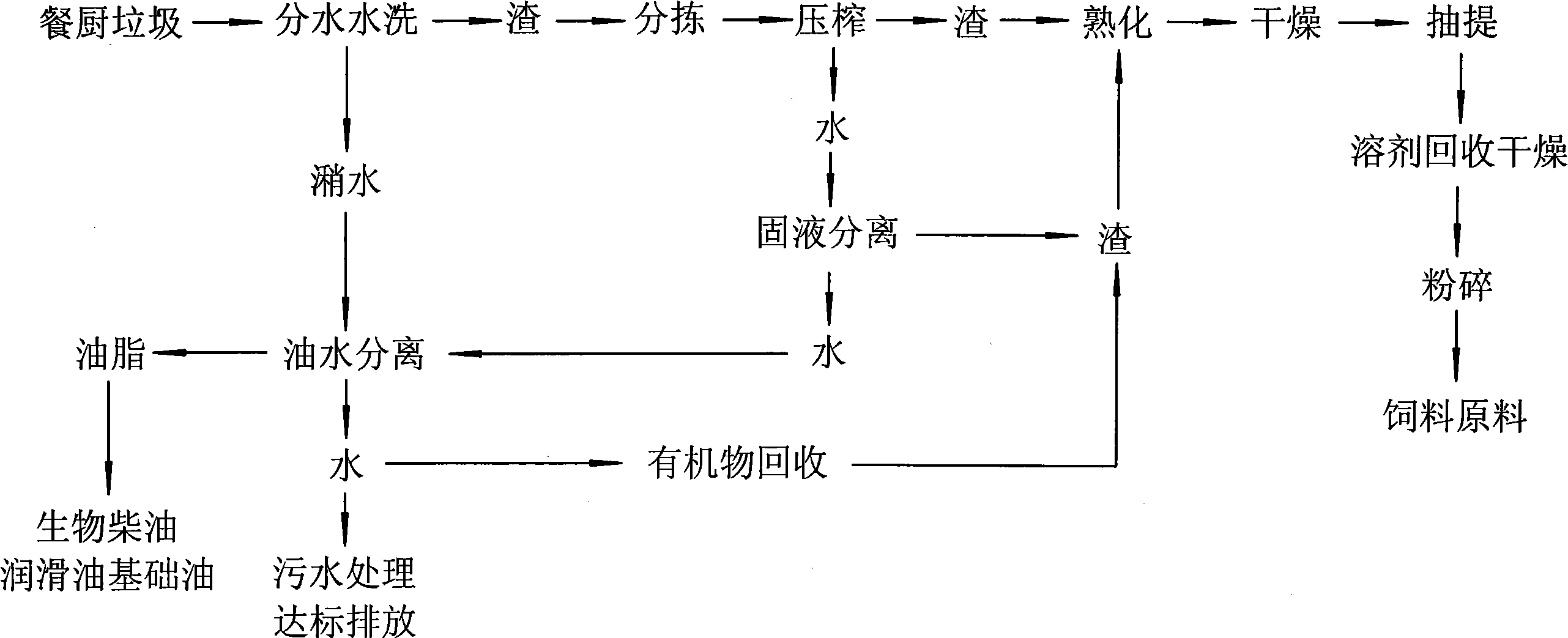Method for preparing feed by carrying out high-temperature curing and leaching on kitchen waste
A kitchen waste, high temperature technology, applied in animal feed, animal feed, application, etc., can solve the problems of damage to nerves, liver, kidney and immune system, can not meet the manufacturer, high water content, to improve economic benefits, important The effect of economic and social benefits
- Summary
- Abstract
- Description
- Claims
- Application Information
AI Technical Summary
Problems solved by technology
Method used
Image
Examples
Embodiment 1
[0053] Embodiment 1: Take laboratory production as an example (get 10 kilograms of kitchen waste).
[0054] The first step: washing with water;
[0055] Put 10 kg of food waste collected by restaurants into a stainless steel pot with a drain valve at the bottom (referred to as No. 1 pot), open the drain valve at the bottom to drain the hogwash and move it to another stainless steel pot with a drain valve at the bottom ( That is, the oil-water separation pot, referred to as No. 2 pot).
[0056] In the No. 1 pot, the material (about 6 kg) after the water discharge is added to 6 kg of 5% NaCl aqueous solution at 40 ° C, and the gas valve connected to the air compressor at the bottom is opened (gas terminal pressure 5 kg / m 2 ), turn the material with air pressure, stir for 30 minutes, and then let it stand for 1 hour, then open the water valve at the bottom, release the washing liquid and move it to the No. 2 pot. The material after water separation is sent out for sorting.
[...
Embodiment 2
[0071] Example 2: Take a kitchen waste treatment plant that processes 50 tons of kitchen waste per day as an example:
[0072] The first step: washing with water;
[0073] Transport 50 tons of food waste collected by the restaurant to the water-splitting washing tank, open the bottom drain valve to discharge the water (soil) and move it to the oil-water separation tank, and add 40 °C to the water-separating washing tank 30 tons of 5% NaCl aqueous solution, open the gas valve connected to the air compressor at the bottom (the gas terminal pressure is 5kg / m 2 ), stirred with air for 30 minutes, and left to stand for 1 hour. Then open the water discharge valve at the bottom, discharge the washing liquid and move it to the oil-water separation tank, and transport the dehydrated materials to the sorting equipment for sorting.
[0074] The second step: sorting;
[0075] The materials that have been separated from the water in the first step and washed with water are sent to the f...
PUM
 Login to View More
Login to View More Abstract
Description
Claims
Application Information
 Login to View More
Login to View More - R&D
- Intellectual Property
- Life Sciences
- Materials
- Tech Scout
- Unparalleled Data Quality
- Higher Quality Content
- 60% Fewer Hallucinations
Browse by: Latest US Patents, China's latest patents, Technical Efficacy Thesaurus, Application Domain, Technology Topic, Popular Technical Reports.
© 2025 PatSnap. All rights reserved.Legal|Privacy policy|Modern Slavery Act Transparency Statement|Sitemap|About US| Contact US: help@patsnap.com



